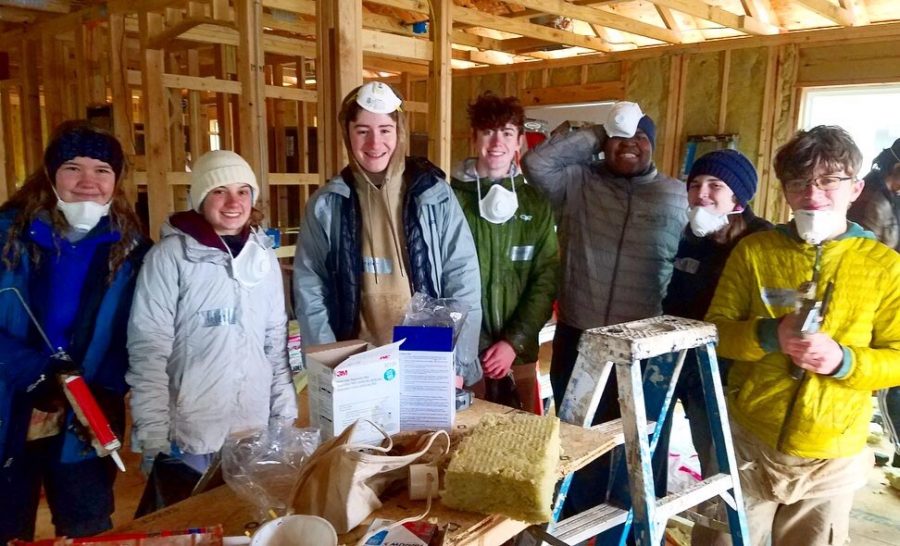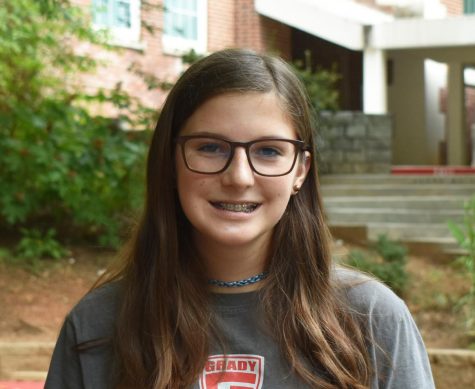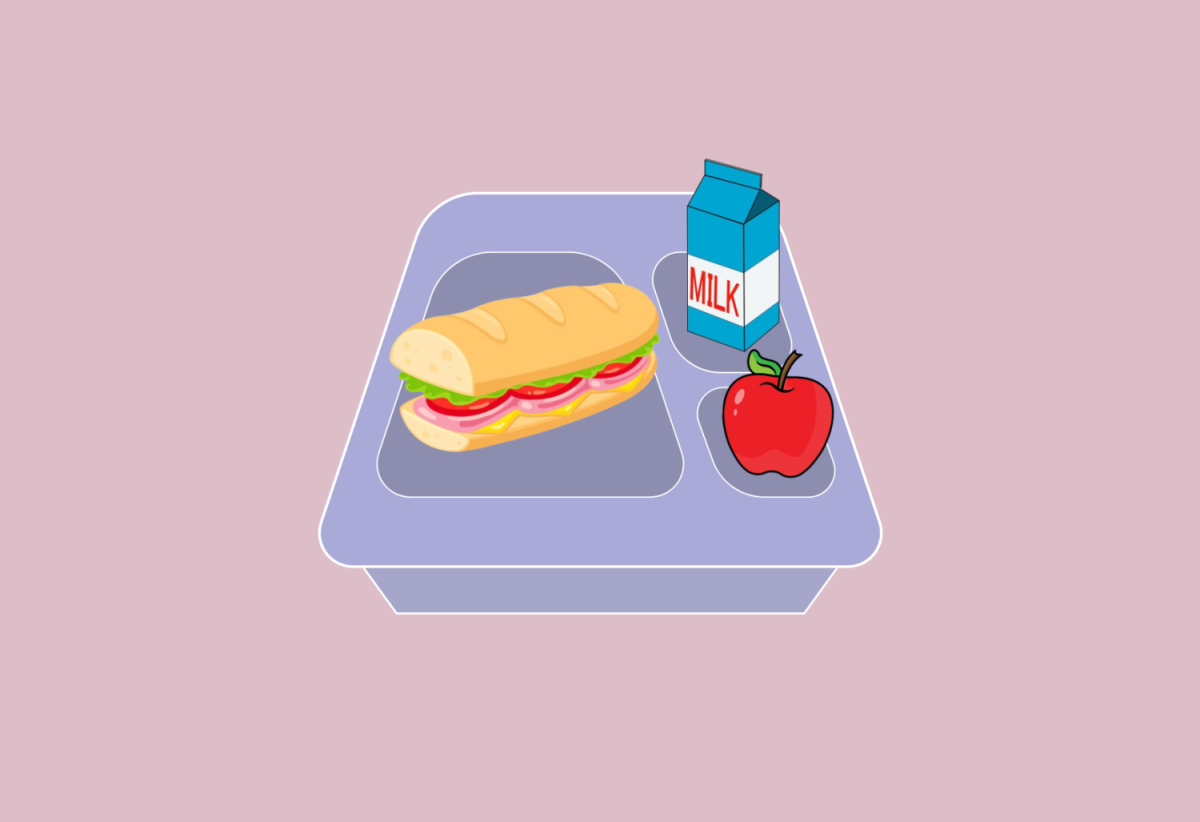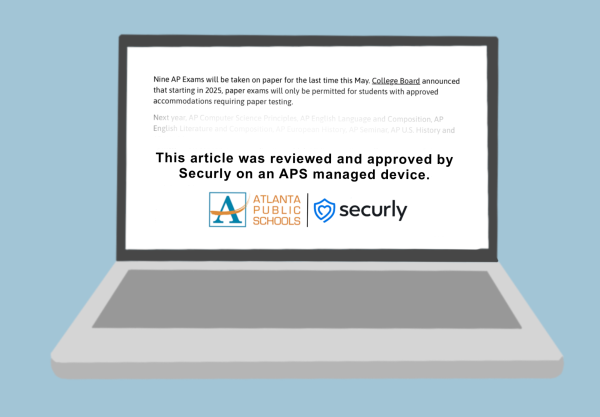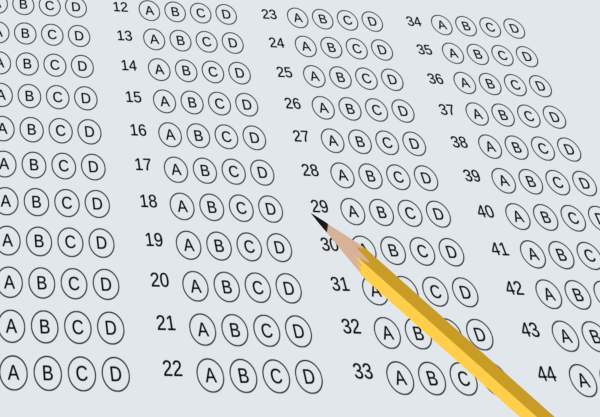Community service graduation requirement takes away volunteerism
Members of Habitat for Humanity Club and G3 Robotics volunteered at a Habitat for Humanity build in February. Encouraging volunteering with a direct impact on the community should be the goal of the community service requirement, not just simply filling the hours.
December 1, 2020
Atlanta Public Schools sets specific guidelines that every senior must meet to graduate, including credits needed across all subjects. One of these requirements is slightly more unusual: students must complete 75 hours of community service across all four years of high school. Due to the coronavirus pandemic, this requirement was waived for the class of 2021. However, this raises another question. Should mandatory volunteering even be required for graduation? In short, it shouldn’t be a requirement.
In its purest form, community service has positive effects for both the volunteer and the community. In a 1999 study, researchers from the Society for Research in Child Development studied the meaningful implications of community service. They found that service-learning led to a greater understanding of the world, a strengthened sense of purpose that would help in a future career and a protection from negative stress. However, researchers noted that these programs should be autonomy-supportive, giving students the choice to participate without a requirement in order to reap the full benefits of service.
Merriam-Webster defines a volunteer as “a person who voluntarily undertakes or expresses a willingness to undertake a service.” The district’s emphasis on mandatory volunteerism is an oxymoron. A community service requirement takes away the root of volunteerism: that it is voluntary.
Many people argue that even if service is mandatory, students will still be doing something good for their community and will reap the subsequent benefits. However, that hasn’t been the case for most students. In a 2009 article about New York City schools that implemented a community service graduation requirement, the New York Times found that there has been a shift away from meaningful community service. They reported a focus of quantity over quality. Instead of serving in an impactful way, students started doing miniscule tasks such as sorting books or organizing pens to get the hours. In some cases, wealthy families were able to send their children on “community service trips” to knock out the hours all at once.
While this incident occurred in New York, these same tactics happen at Grady. Hours get handed out to students for tasks as easy as helping carry books across the school or helping set up for an open-house event. Students can even get hours for simply donating supplies, and most of the time, the hours given are not reflective of the work put in. Meeting the community service requirement is not hard to do, but the way the hours are being filled isn’t helping the community and students are not reaping the benefits of service-learning. Many students simply fill the hours, with no significant takeaway.
So how do we fix this? As the president of a community service-based club, Habitat for Humanity, I’ve seen firsthand the benefits of community service. I’ve found that while most people first join the club to fill the graduation requirement, they continue to volunteer even after their hours are filled because of the satisfaction they’ve gained from the experience. This is the kind of community service that we should be pushing students to do, community service based off of their intrinsic motivation, and not the extrinsic motivation of trying to hit enough hours then quitting. The current requirement adds more stress on already busy students, so it’s no surprise that students take the free hours that are handed out instead of committing to serious volunteer work that will give them lasting benefits.
There are two solutions. The first would be to get rid of the community service minimum to graduate and to incentivise community service but not make it mandatory. Currently, if students log 150 hours they receive a community service cord to wear at graduation. Keeping this as an incentive and exposing students to beneficial community service opportunities would be the best route. A second option, if schools really do not want to get rid of the graduation requirement, would be to lower the hours requirement and really crack down on how students are getting these hours. Making it about quality, not quantity, is beneficial to students and the community. As Great Neck school district superintendent William Shine told the New York Times, volunteerism is the ”purest form of community service.” Let’s return to the original meaning of volunteerism, and make a positive impact in our communities.

